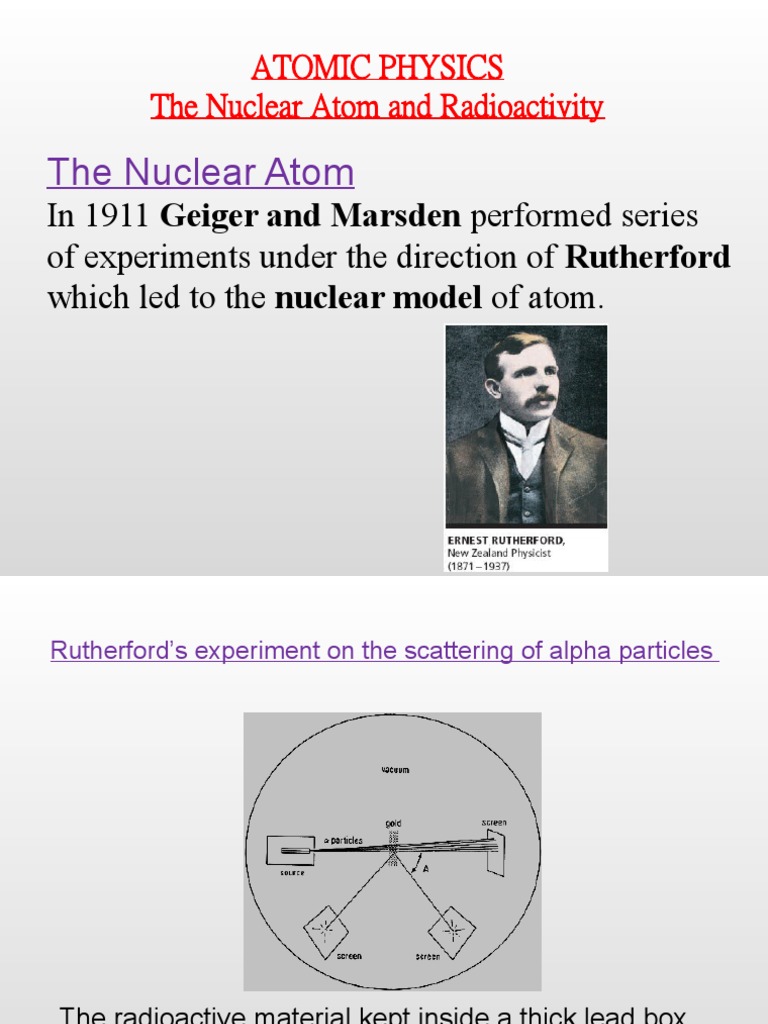Atomic physics, the branch of physics that explores the constituent particles of atoms and their interactions, is teeming with research opportunities that push the boundaries of our understanding. The field has witnessed profound advancements over the years, yet numerous unanswered questions persist. What are the current research goals in this intricate discipline, and how might they shape our understanding of the universe? As we delve into these inquiries, we uncover a rich landscape of scientific challenges and exhilarating possibilities.
One of the paramount goals in atomic physics is the precise understanding of atomic structure and behavior. At the heart of this endeavor lies the quantum mechanical description of atoms, which provides profound insights into electron configurations, energy levels, and the overall stability of atoms. Researchers are now employing sophisticated techniques such as laser cooling and trapping to investigate phenomena like electron correlations—the complex interplay between electrons that can significantly influence atomic properties. This approach challenges our classical perceptions of atomic interactions, urging us to reconsider the foundational aspects of atomic theory.
In the realm of exotic atoms, a particularly compelling research focus centers on the formation and behavior of systems that diverge from the well-known hydrogen atom. Exotic atoms consist of particles such as positrons or muons replacing electrons. These atypical scenarios allow physicists to scrutinize fundamental forces and symmetries in a novel context, with implications for particle physics and our understanding of antimatter. This line of inquiry poses an engaging question: What can the peculiar behaviors of these exotic states reveal about the fundamental principles governing the standard model of particle physics?
Additionally, the quest for precision in atomic measurements is a cornerstone of contemporary atomic physics research. With developments in tools like optical lattice clocks and atomic interferometry, scientists are striving for greater accuracy in measuring time, frequency, and fundamental constants. Such precision could pave the way for enhanced technologies in quantum computing, GPS, and telecommunications. Furthermore, testing the limits of the standard model through high-precision experiments can unveil potential discrepancies, hinting at new physics beyond our current understanding. This ambitious pursuit raises an intriguing challenge: How do we reconcile our existing theories with the elusive phenomena that precision measurements may uncover?
Moreover, the investigation of quantum entanglement and its application in quantum information science stands at the forefront of atomic physics. Quantum entanglement—a phenomenon where particles become interlinked such that the state of one instantly influences the state of another, regardless of distance—has profound implications for secure communication and quantum computing. Researchers are pushing the boundaries of entanglement generation and stability, striving to develop scalable quantum networks. This area of study invites exploration into the question: How might the entangled states of numerous atoms unlock new capabilities in computing and communication technologies?
Another captivating avenue involves the study of ultracold atoms and their unique properties. When cooled to temperatures near absolute zero, atoms exhibit quantum behaviors that are not observable at higher temperatures. This regime offers a fertile testing ground for theories related to quantum phase transitions and superfluidity. Current research aims to manipulate these ultracold atomic gases to gain insights into many-body physics and the emergence of quantum coherence. The intriguing challenge posed by this line of inquiry is how to systematically control and exploit these phenomena for advanced applications in material science and quantum technologies.
The exploration of atomic interactions with external fields represents another pivotal area of research. Investigating how electric and magnetic fields influence atomic structures and behaviors can significantly contribute to our understanding of fundamental interactions. In particular, the phenomenon of atomic polarization, where an external field induces a dipole moment, is a subject of intense study. This research may have far-reaching implications in the realm of photonics and the development of materials with tailored optical properties. The playful question arises: Can we harness these atomic interactions to create revolutionary technologies, such as efficient energy conversion systems or advanced photonic devices?
Furthermore, atomic physics is at the verge of merging with biology—a pioneering interdisciplinary frontier. Researchers are exploring atomic-level interactions within biological systems, such as protein folding and molecular structures, utilizing advanced imaging and spectroscopy techniques. Such studies not only enhance our comprehension of fundamental biological processes but may also facilitate innovations in medical technology and pharmacology. This compelling intersection invites a thoughtful challenge: How can the principles of atomic physics be applied to unravel the complexities of biological systems, potentially transforming healthcare and drug discovery?
Finally, the fundamental question of symmetry in atomic physics continues to propel research forward. Symmetries in nature, such as time reversal and parity, reflect fundamental characteristics of the universe. Investigating how atomic interactions uphold or violate these symmetries can unveil insights into the nature of forces and matter. The exploration of CP violation (the difference in behavior between matter and antimatter) is of particular significance, as it may explain the dominance of matter over antimatter in the universe. This profound challenge prompts physicists to ponder: What role do symmetries play not only in atomic interactions but also in the overarching framework of our universe?
In conclusion, the current research goals in atomic physics are not confined to understanding atoms in isolation; they expand into a myriad of related disciplines and applications. From precision measurements and exotic states to the intersection of atomic physics with biology, each avenue brings with it an array of challenges and questions. As scientists continue to explore the depths of atomic intricacies, the discoveries emerging from this vibrant field are poised to redefine our comprehension of the universe and inspire future innovations across diverse sectors.












